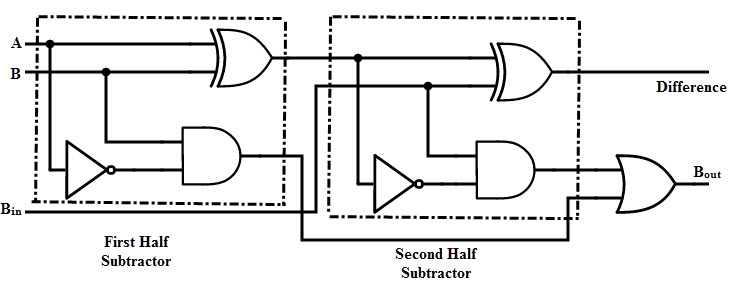

are determined by external components and have little dependence on temperature coefficients or manufacturing variations in the op-amp itself.įig: op-amp as subtractor circuit.

Optimization of adders supremacy along with its vicinity is a demanding chore. While processing the binary information there might be need to subtract the numbers. Due to negative feedback, the characteristics of an op-amp circuit, its gain, input and output impedance, bandwidth etc. Adders are the integral part of any digital circuit operation. what are the half subtractor and full subtractor circuits what are the half subtractor and full subtractor circuits The design of an arithmetic logic unit requires many functions to implement that are: adders, subtractors, multipliers, and some logical operations as well. The popularity of the op-amp as a building block in analog circuits is due to its versatility.

It is also possible to construct a circuit that performs both addition and subtraction at the same time. Below is a circuit that adds or subtracts depending on a control signal. Operational amplifiers had their origins in analog computers, where they were used to perform mathematical operations in many linear, non-linear and frequency-dependent circuits. In digital circuits, an addersubtractor is a circuit that is capable of adding or subtracting numbers (in particular, binary). An operational amplifier (often op-amp or opamp) is a DC-coupled high-gain electronic voltage amplifier with a differential input and, usually, a single-ended output. In this configuration, an op-amp produces an output potential (relative to circuit ground) that is typically hundreds of thousands of times larger than the potential difference between its input terminals.


 0 kommentar(er)
0 kommentar(er)
